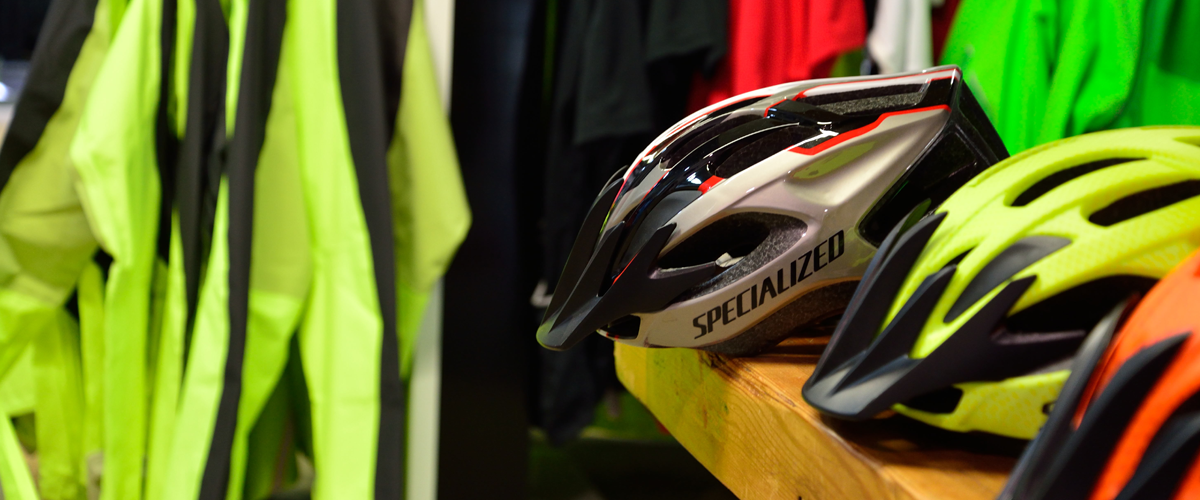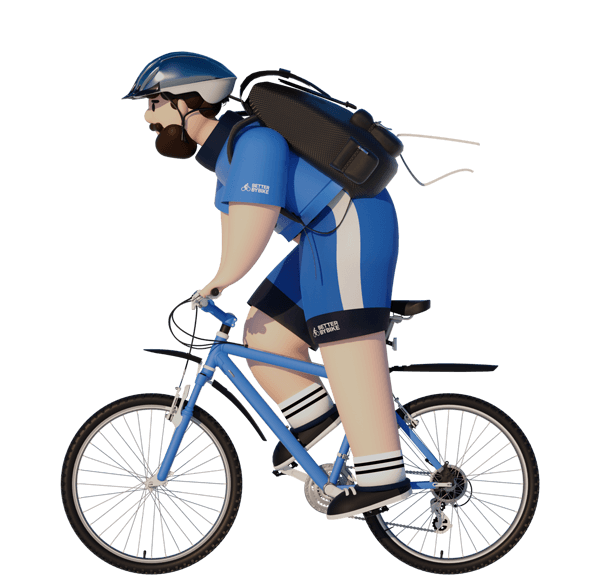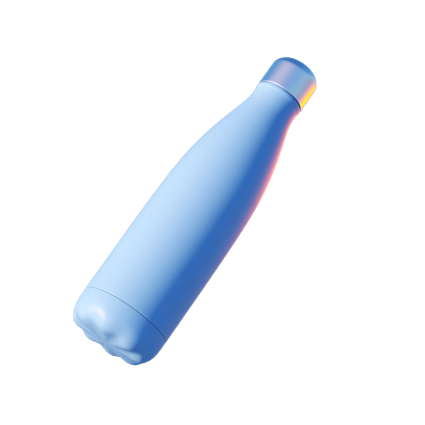Clothing
- Your regular, everyday clothes are perfectly suitable to wear for cycling short journeys as long as they don’t restrict your ability to pedal or have loose, flappy bits that might get caught in moving parts, like the chain or wheel spokes.
- However, if you’re enjoying riding your bike and are making longer leisure journeys, then there’s a huge range of specialist clothing available for cyclists, including padded shorts or underpants for extra cushioning!
High visibility clothing
- Making sure you can be easily seen by other road users will help keep you safe, so wear light-coloured clothing or something fluorescent to increase your visibility during daylight hours.
- Even better, wear a reflective ‘hi-vis’ bib or jacket – particularly recommended for cycling in the dark and/or in heavy traffic.
- At night, reflective ‘hi-vis’ accessories can add to your visibility – reflective armbands, leg bands and helmet covers are all available from bike shops.
Helmets
- Wearing a cycle helmet is recommended, but not a legal requirement, so it’s your decision.
- A properly-fitted helmet will protect your head from serious injury in the event of an accident; an absolute ‘must’ for children learning to cycle. A good bike shop can help you choose the right size and fit it for you.
- A poor-fitting helmet can be a liability and should be avoided.
- There’s a great selection of types, colours, shapes and sizes to choose from, but make sure it conforms to the safety standards i.e. carries a CE mark or a BS number.
- If it gets damaged, you’ll need to replace it as it’ll no longer give you the protection you need.
Shoes
- Any sturdy, well-fitting shoes are suitable for cycling e.g. walking shoes or trainers.
- It’s advisable not to wear shoes that might come off while you’re riding e.g. slip on’s, flip-flops or high heels.
- If you’re commuting to work, carry your smart shoes with you or keep a pair at the office to change in to.
- For the serious cyclist, there’s a huge range of specialist cycling shoes available.
Dressing for the weather
- Gloves are essential for the cold weather as having cold hands can be a distraction from riding and gives you better grip on your handlebars.
- In winter, it’s likely your shoes will get wet – try putting plastic bags over work shoes or change into a spare pair after you arrive. You could consider buying waterproof overshoes, available from bike shops.
- A waterproof jacket and trousers are ideal, or carry a plastic cycling cape for a quick cover up.
- Wear lots of thinner layers rather than anything too big and bulky, that way you can take off only what is necessary if you get too hot.
- A jacket with a zip – fleece or lightweight and shower-proof – is an easy way to adjust your temperature while riding. Remember: cycling is active exercise and you’ll warm up quickly!
- It’s worth thinking about what you’ll be wearing at work before you set off!
Bike seats and trailers for children
Buying the right equipment guarantees a safe and pleasant family experience
Child seats
You can use these for toddlers from around 12 months old when they can support their head with a helmet on. Be sure to use padded headrests, straps and seat to make the journey more comfortable.
- Rear-mounted seat: cost-effective, widely used and some come with a reclining option for resting or sleeping. The only problem with this kind of seat is that you can’t easily talk to your toddler, and you’ll also be obscuring their view
- Front-mounted seat: this option makes it easier for you to talk to your toddler, and easier for them to see where they are going. It is also easier to get on or off your bike with this option, but its position might affect your steering and balance
Trailers
Most trailers can be used for toddlers from around 12 months old, when they can support their head. You will find a summary of options below.
- Single and double versions
- Fully waterproof; sun nets also included
- With room to carry shopping
- Some options can be used as buggies and cross country strollers
- Can sometimes be difficult to carry up and down stairs
- Require storage space
- Cheaper versions tend to be heavier
Tag-along trailer bike
Tag-alongs can be attached to any bike, children seat on a half child’s bike that is attached to the back of an adult bike. Your child can pedal or just relax and enjoy the ride.
Accessories
To keep yourself and your bike safe, secure and legal, there are some essential accessories that you’ll need.
You can carry quite heavy loads when cycling – whether it’s your shopping or just a change of clothes, you need to find the set-up that works best for you.
Essentials
Lights
- You must have working lights on your bike if you’re cycling in the dark – it’s the law. A white front light and a red rear light – a flashing front light is allowed, but a steady light is recommended.
- Most lights are easily detachable, so remove them when you leave your bike
Bell
- A bell is an important safety item for signalling to pedestrians and other cyclists. Horns are also available – but they’re much louder, so it’s advised you use them sparingly and only in busy urban areas, not on quiet countryside routes.
Locks
- It’s worth investing in a good lock (or two) for your bike.
- Cable lock, padlock and chain, and rigid metal D-lock are the main types – often used in combination. Find out the most effective way to lock up your bike on our Bike Security page (the video is definitely worth a watch!)
Pump
- Keeping your tyres pumped up to the specified pressure makes cycling much easier; your bike handles better and you’re less likely to get a puncture.
- There are two widths of tyre valve, make sure you get a pump that fits.
Puncture repair kit
- Best to be prepared! It’s a small kit containing all you need to mend a puncture, available from any bike shop.
Reflectors
- A red rear reflector and amber pedal reflectors are a legal requirement, but these are usually pre-fitted to your bike by the manufacturer.
- To increase your visibility in the dark and in heavy traffic, you can add a white reflector on the front and spoke reflectors on the wheels.
- Being highly visible to other road users is the best way to stay safe, so consider wearing some reflective clothing.
Carrying stuff
Rucksacks & bum bags
- Ideal for carrying small loads – a bum bag can hold a few essentials, and a small rucksack is fine for a change of clothes, but can make you feel hot or a little restricted.
Bar bags & pouches
- Fitted on to the handlebars or underneath the saddle, they’re useful to carry smaller things like maps, money and tools. Make sure they’re detachable, so you can take them with you when you leave your bike
Racks & panniers
- These are best for carrying heavier loads, like your shopping. Panniers are specially-designed bags that fit onto a cycle rack, usually over your rear wheel.
- Front racks and panniers are also available, useful if you have a child seat on the back. Touring cyclists often have both front and rear panniers.
For longer journeys
Water bottle
- Cycling is thirsty work! Avoid getting dehydrated by fitting a bottle carrier to your bike frame. They don’t cost much and usually hold a 1-litre squash bottle.
Map & guides/ smartphone
- There are some great free apps around for maps and cycle routes, so a smartphone is very useful. However in case of poor coverage or no battery, a paper map or guide makes a good backup.
High-energy snacks
- Cycling is high-energy exercise, so you’ll need to take a snack or two with you on a long ride.
Spare clothing
- Remember to take an extra layer of clothing with you, as your temperature may drop rapidly when you stop for a break.






